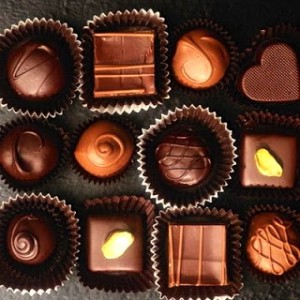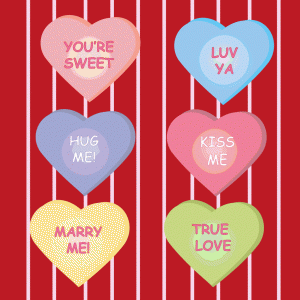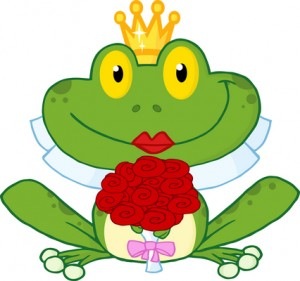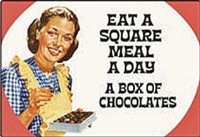 Why are about 1.1 billion boxed chocolates — that’s about 58 million pounds of chocolate candy — sold in the United States during the week before Valentine’s Day? Why not twizzlers or gummy bears?
Why are about 1.1 billion boxed chocolates — that’s about 58 million pounds of chocolate candy — sold in the United States during the week before Valentine’s Day? Why not twizzlers or gummy bears?
What Is It About Chocolate That Makes It The “Romantic” Candy?
Chocolate infatuation began around 2,000 years ago. The higher echelon in the Mayan and Aztec societies infused cocoa beans with water which formed frothy chocolate drinks that were both drunk on special occasions and used as sacrifices to the gods.
Montezuma, the Aztec ruler, was of the belief that chocolate was an aphrodisiac. He routinely drank it before dallying in his harem, which cemented the association of chocolate with love and romance. Years later there is scientific evidence that the chemical phenylethylamine found in chocolate is linked to feelings of excitement and attraction.
Aztec society also used cocoa beans as money and as gifts. In the 16th century, the Aztec’s reverence of chocolate prompted Christopher Columbus to take some back to Queen Isabella of Spain. The love for chocolate and its mystical powers spread throughout Europe. Chocolate’s power was believed to be so strong that nuns were forbidden to eat it and French doctors used it as a treatment for a broken heart.
In 1822 John Cadbury opened a tea and coffee shop in Birmingham, England and soon began selling chocolates. In 1861 his son Richard created the first heart-shaped box to fill with chocolates for Valentine’s Day. This year more than 36 million heart-shaped boxes of chocolate will be sold.
Chocolate: The Good And The Not So Good
A pound of milk chocolate has 2300 calories, 140 grams of fat, 270 grams of carbohydrates, and 31 grams of protein. Although a lot has been said about chocolate’s heart healthy benefits, it’s still a high calorie, high fat food.
Isn’t Chocolate Good For Me?
In moderation—and, depending on the type—the answer is yes, although there is no “prescribed dosageamount.” The health benefits of chocolate come from cocoa, and dark chocolate has a greater concentration of cocoa than milk chocolate. White chocolate, without any cocoa in it, is not really chocolate.
Chocolate, especially dark chocolate, contains flavonols which have antioxidant qualities and other positive influences on heart health. But Valentine’s chocolates are often not high quality chocolate and are moderately high in fat, one-third of it the type of saturated fat that isn’t heart healthy. Extra ingredients like crème and caramel fillings can add lots of extra fat and calories.
Oh Those Calories: Valentine’s Hearts And Kisses
There’s nothing wrong with enjoying a treat of some Valentine’s chocolate. A whole box might be a different story!
Here’s an idea of what the calories might be in some of the more common Valentine’s chocolate:
- Hershey’s Kisses, 9 pieces: 230 calories, 12g fat
- Hershey’s Special Dark Hearts, 5 pieces: 220 calories, 7g fat
- Reese’s Peanut Butter Hearts, snack size: 170 calories, 10g fat
- Russell Stover boxed chocolates, 2 pieces: 150 calories, 4g fat
- Dove Dark Chocolate Hearts, 5 pieces: 210 calories, 13g fat
- Godiva boxed chocolates, 4 pieces: 210 calories, 12g fat



